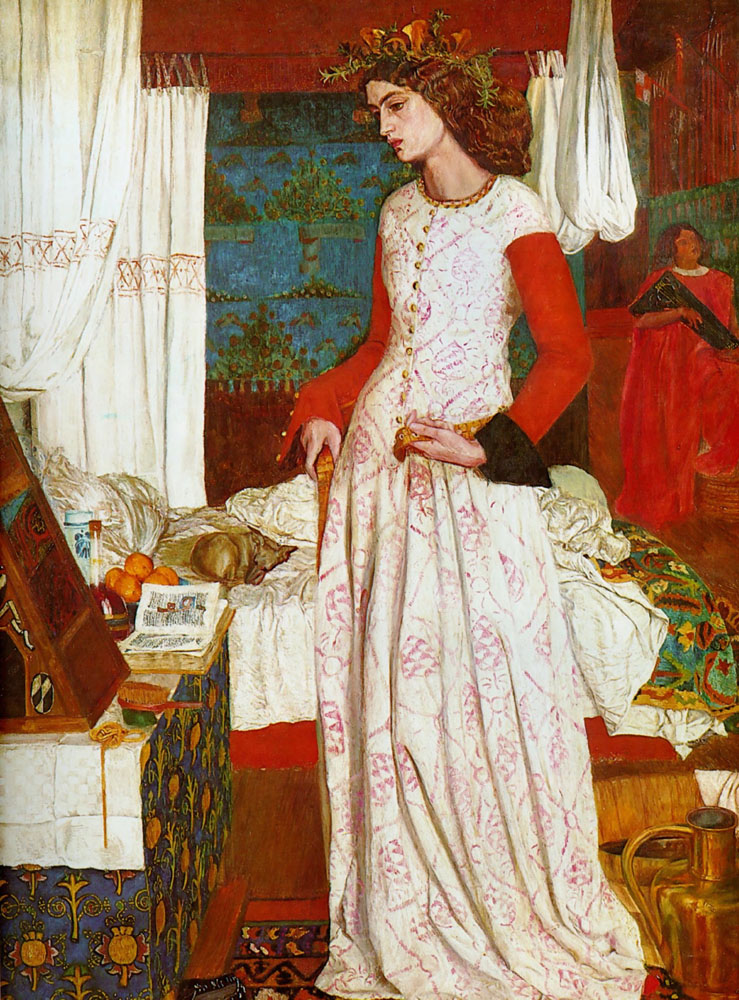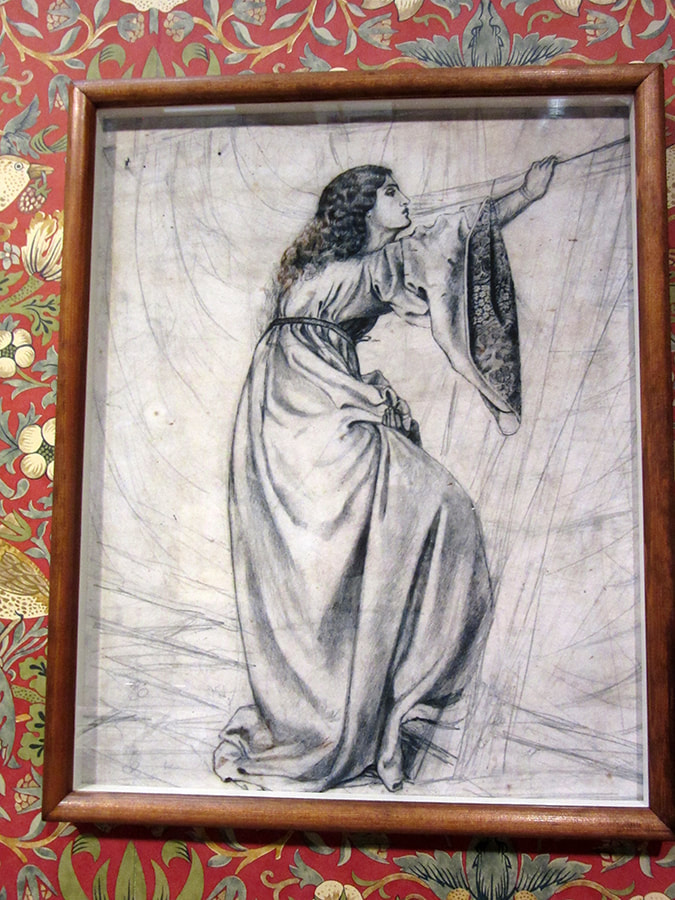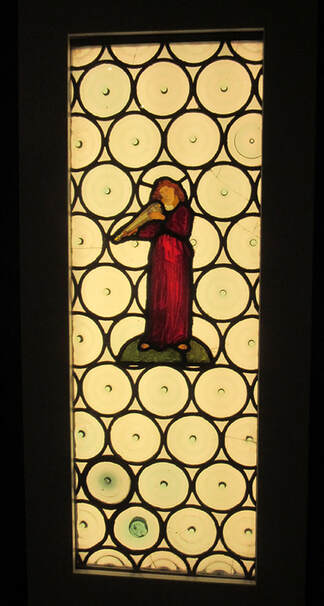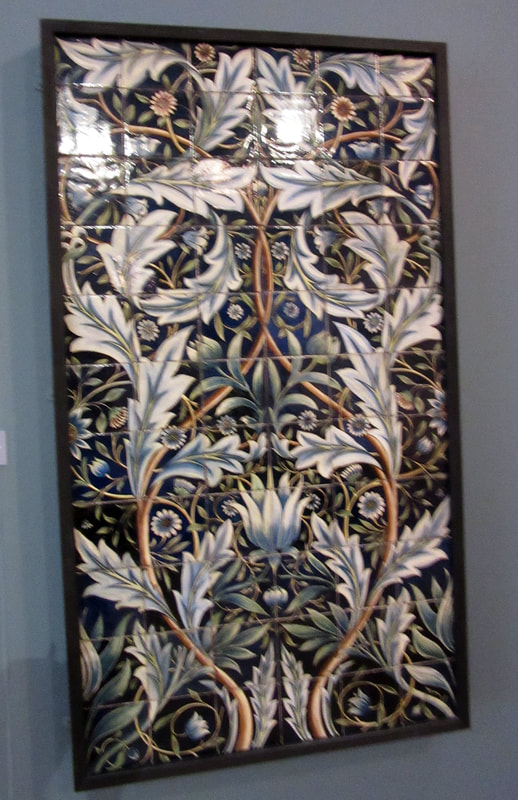An Appreciation: William Morris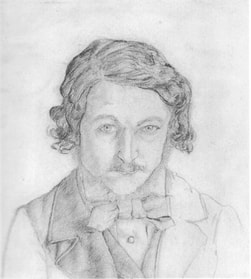 William Morris self portrait William Morris self portrait
William Morris was a man of many talents. A key figure in the second wave of Pre-Raphaelites, Morris subsequently abandoned painting in favor of design becoming a leader in the British Arts and Crafts Movement.
Born in 1834 into a wealthy middle class family, Morris grew up on landed estates in Essex. During his boyhood, he especially liked reading the romantic novels of Sir Walter Scott, many of which were set in the Middle Ages. He also enjoyed exploring old churches and the ruins of medieval buildings. While at the University of Oxford, he developed an interest in medieval history and architecture. Morris came to believe that the chivalric values of the Middle Ages had become lost in Victorian industrialization. Together with his lifelong friend Edward Burne-Jones Morris became part of the Birmingham Set, which met to hold discussions on such ideas and to recite plays and poetry. Morris also started to write poetry set in the Middle Ages. (During his lifetime, Morris was known chiefly as a poet). The critic John Ruskin had a profound influence on Morris. Among other things, Ruskin argued for rejecting industrial goods in favor of handcrafted goods. He was also a champion of a group of young artists who called themselves the Pre-Raphaelite Brotherhood. Led by Dante Gabriel Rossetti, John Everett Millais and William Holman Hunt, this group argued for a return to authenticity and seriousness in art. They believed that these qualities had been lost with the High Renaissance. Their paintings often depicted romanticized visions of Medieval life and romantic legends. Morris was naturally attracted to the Pre-Raphaelite philosophy and after graduating from Oxford and moving to London, he purchased several of their paintings. However, by the time Morris arrived on the scene, the three leaders had drifted apart and the original movement was languishing. Still, Morris was able to became friends with Rossetti, who persuaded him to become a painter. Together with Burne-Jones, the three constructed a second Pre-Raphaelite movement. Although Morris remained friends with Rossetti for the rest of Rossetti's life, it was a difficult relationship. Rossetti found it fun to taunt Morris in order to provoke Morris' fierce temper. More importantly, in 1857, while working with Rossetti on a set of murals for the Oxford Union, Morris fell in love with Jane Burden. She was a woman from a working-class background who Rossetti had persuaded to come and model for the murals. Although she did not love Morris, Burden agreed to marry him. However, she later became involved in a notorious affair with Rossetti that lasted on various levels until his death in 1882. Not long after Rosetti's death, Jane began a second affair with the poet Wilfrid Blunt. Deciding that he lacked the talent to be a painter, Morris turned more and more to design. During his career, Morris designed wallpaper, stained glass windows, textiles, and embroidery as well as designing borders and ornamentation for books. Many of these were based upon Medieval designs. Because he believed that a designer should know how something is made before designing it, Morris studied how various items were produced before designing such items. In 1871, Morris, together with several others including Rossetti, founded Morris, Marshall, Faulkner & Co., known as “The Firm.” The plan was to produce high quality goods using handcrafted methods. Morris, Rossetti, Burne-Jones and various other members of their circle created designs for architectural carvings, furniture, stained glass, wallpaper and other items. In order to obtain more control over the Firm and its production, Morris bought out Rossetti and the other shareholders, changing the name to Morris & Co. in 1875. During this period, there was a wave of nostalgia for the Middle Ages. It was, for the most part, based upon a romanticized vision of knights in armor and fair damsels. As a result, the Firm's products became very fashionable among the upper and middle classes. (Working class families could not afford the prices the Firm charged). The commercial success of the Firm created some tension for Morris. Although he was a wealthy man who lived in his life in various mansions, Morris was an outspoken advocate of radical socialism and even communism. While the working conditions for employees of the Firm were better than the conditions at its competitors, it was still a traditional company, not a commune. Even leaders of the various working-class socialist groups that Morris joined were puzzled by his behavior. Morris was an avid traveler. He made numerous trips to the Continent during which he would explore the Medieval architecture. Inspired by his friend the Icelandic scholar Eirikr Magnusson, he also visited Iceland. Morris produced several books based by Icelandic sagas. During the 1890s, Morris' health deteriorated and he was plagued by gout and possibly epilepsy. Eventually, he became an invalid. Morris died in October 1896 of tuberculosis. |
Above: "Le Belle Iseult."
Below: In this drawing, Morris depicted his wife Jane Burden in Medieval garb. Above: "Minstrel", a stained glass window.
Below: A texile design by Morris. |
Artist appreciation - William Morris
